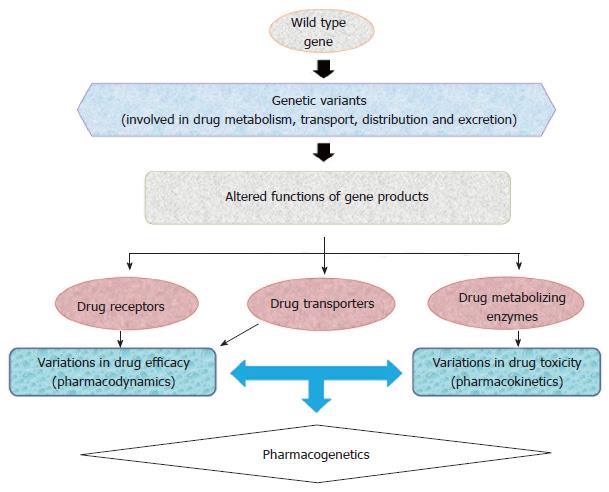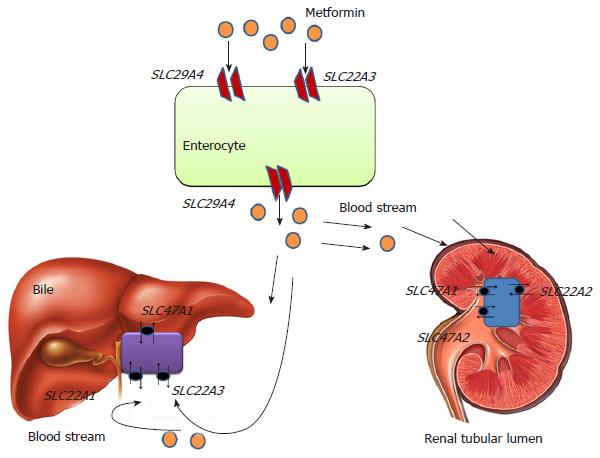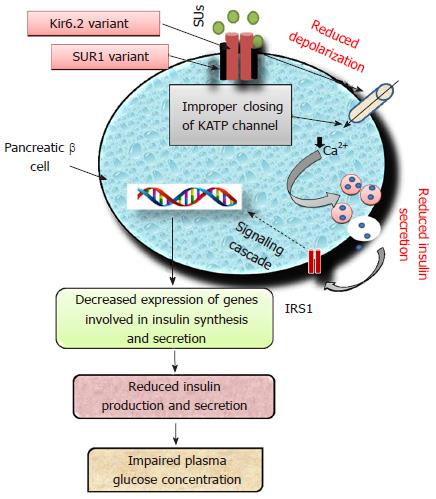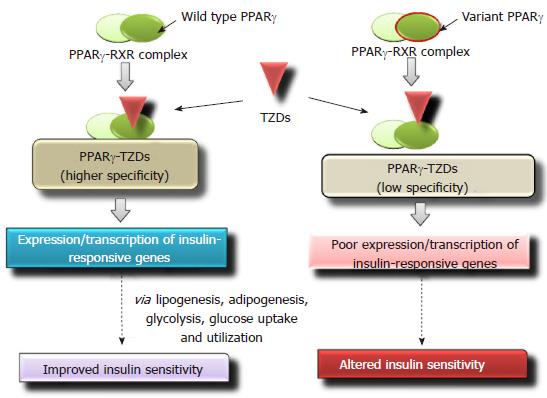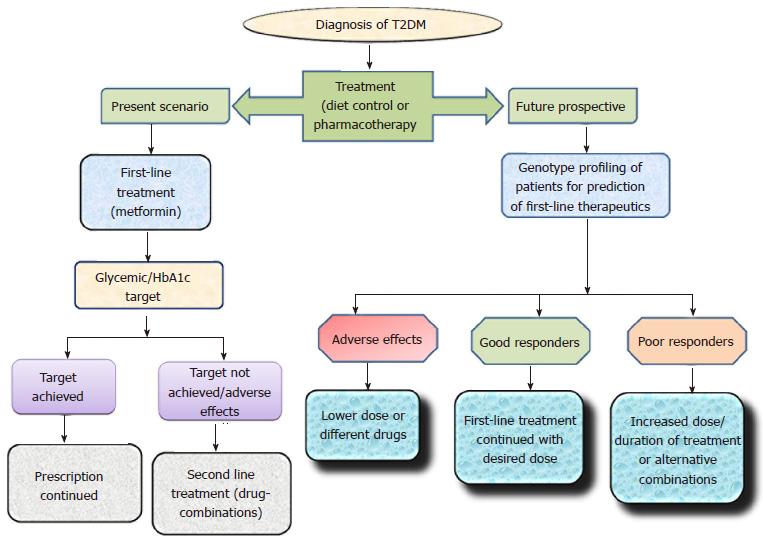Copyright
©The Author(s) 2016.
World J Diabetes. Aug 10, 2016; 7(15): 302-315
Published online Aug 10, 2016. doi: 10.4239/wjd.v7.i15.302
Published online Aug 10, 2016. doi: 10.4239/wjd.v7.i15.302
Figure 1 Effects of gene polymorphisms on drug efficacy and toxicity.
Figure 2 Schematic representation of cellular locations of metformin transporters.
SLC22A3: Solute carrier family 22 member 3; SLC29A4: Solute carrier family 29 member 4.
Figure 3 Schematic diagram showing the Kir6.
2 and SUR1 variants affecting sulfonylurea efficacy. Pancreatic β cell membrane with SUR1/Kir6.2 variant leads to improper closing of KATP channel on binding with SUs. This subsequently leads to poor membrane depolarization and less influx of Ca2+ ions which will result in less and delayed insulin secretion. Hence, low level of insulin molecules will be available to bind with IRS1 and lead to an impaired signaling cascade resulting in poor management of glycemic condition. SUs: Sulfonylureas; SUR1: Sulfonylurea receptor 1; KATP: ATP-sensitive potassium channel; IRS1: Insulin receptor substrate 1; SUR 1: Sulfonylurea Receptor 1.
Figure 4 Schematic representations of peroxisome prolierator-activated receptor γ variants affecting the efficacy of thiazolidinediones.
TZDs: Thiazolidinediones; PPARγ: Peroxisome proliferator-activated receptor γ.
Figure 5 Clinical applications of pharmacogenetics in type 2 diabetes mellitus.
T2DM: Type 2 diabetes mellitus; HbA1c: Glycated haemoglobin.
- Citation: Singh S, Usman K, Banerjee M. Pharmacogenetic studies update in type 2 diabetes mellitus. World J Diabetes 2016; 7(15): 302-315
- URL: https://www.wjgnet.com/1948-9358/full/v7/i15/302.htm
- DOI: https://dx.doi.org/10.4239/wjd.v7.i15.302













